Decoding Deborah Vance
Leopard? ✔️ Expensive? ✔️ 'Hacks' costume designer on how to keep a character on the right side of caricature
Deborah Vance is about as far from “Coastal Grandmother” as you can get.
Played by national acting treasure Jean Smart in the HBO Max smash Hacks — just renewed for a third season — Smart’s Las Vegas comedian wouldn’t be caught dead in neutral hues and withering white t-shirts. Deborah Vance’s style is full-tilt, a riot of color, pattern and flowing layers, with a penchant for leopard.
Season two took the pair of Vance and almost-cancelled twentysomething Ava (played by Hannah Einbinder) on a comedy tour-by-bus to try to revive Vance’s flailing career, far away from her plush Vegas confines. Yet Vance is pin-perfect, even at a rest-stop gift store. I just finished it and was thinking a lot about the subtle ways the fashion communicates something about the characters in the series, so I called up Kathleen Felix-Hager, the show’s costume designer (nominated for an outstanding contemporary costume Emmy last year). She told me the key to dressing Smart’s character:
“Deborah Vance has taste, right? She's not a tacky person. She has money, she's a collector of fine objects of art which we know from season one and the pepper shaker. So we also decided that she also collects clothes, and she just invests in really good expensive pieces and jewelry and things. So we would mix in a vintage piece here and there because like, ‘oh, that was something that Deborah had bought in the ’80s and it still looks good today’ and she's going to whip it out.”
To supplant the custom pieces and vintage finds, Felix-Hager also has pulled from designers as varied as Lanvin, the French house Casablanca and Rosetta Getty.
It’s rare, of course, to see a 70-year-old woman star in a hit series (after a failed pitch meeting in L.A., Vance says, ‘It takes this town to remind you how worthless you are.’) or to star in a show about a late-stage career, and even rarer to find that role not be caricatured — something Felix-Hager knew was key. Before she signed on, Felix-Hagar was given the first few scripts and says she had never read a story about women that felt so real to her. “I fell in love with the characters immediately, especially Deborah Vance, and I knew Jean was going to play her, and I'd worked with her briefly before when I did Veep,” says Felix-Hager. “Jean and I talked about Deborah’s backstory. These two women are written at two different spectrums of their careers; separate generations yet, very similar in how they are ambitious and go for things.”
Also, adds Felix-Hager, “Truth be told, she's a little bit like my grandmother, like if my grandmother was very chic and slightly over the top, but there was always an elegance to her. And so I just took that as a jumping-off point for Deborah. There’s an air of embracing your femininity and just being like, ‘this is what I love to wear and I'm going to wear it at 9 in the morning.’”
For Deborah, who’s “on” almost 24/7, life itself is one big red carpet.
But if Deborah embraces her fashion choices unapologetically so, too, does Ava, with her normcore t-shirt and trousers, and “chimney-sweep boots on my silk rug” that the Vance character decries in their first stormy meeting. (Ava gives as good as she gets, ripping the star’s glitzy mansion as “Cheesecake Factory” décor.)
“With Ava, we wanted to really make her a very real representation of that world — a young twentysomething in Los Feliz, a struggling comedian/writer, a little selfish, a little self-involved,” says Felix-Hager.
For season two on the road, “we still had a version of Deborah Vance every day but her stage persona on the road was different,” says Felix-Hager. “It was very pared-down to reflect the fact that her act itself was sort of pared-down and stripped-down and raw. So we used a base layer of black pants and a black tank, and we just kept changing out her blazers that each had a lot of embellishment.”
The season also brought a couple of episodes hilariously set in cringy locales that brought specific costuming opportunities:
The rest-stop gift store 🚍

The state fair 🤠
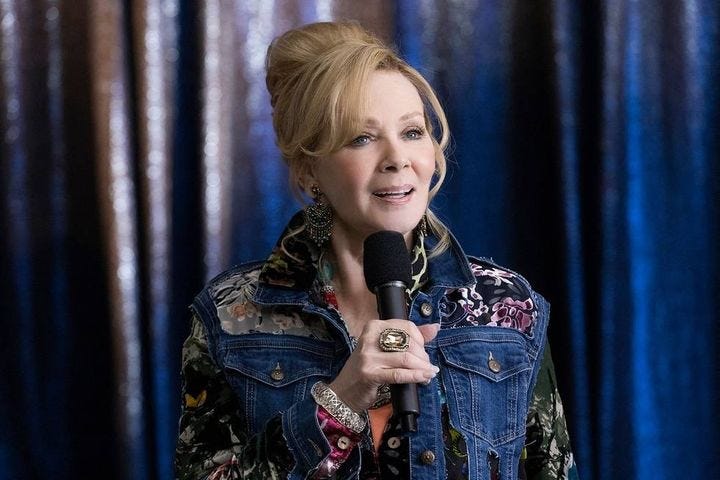
The lesbian cruise 🛳
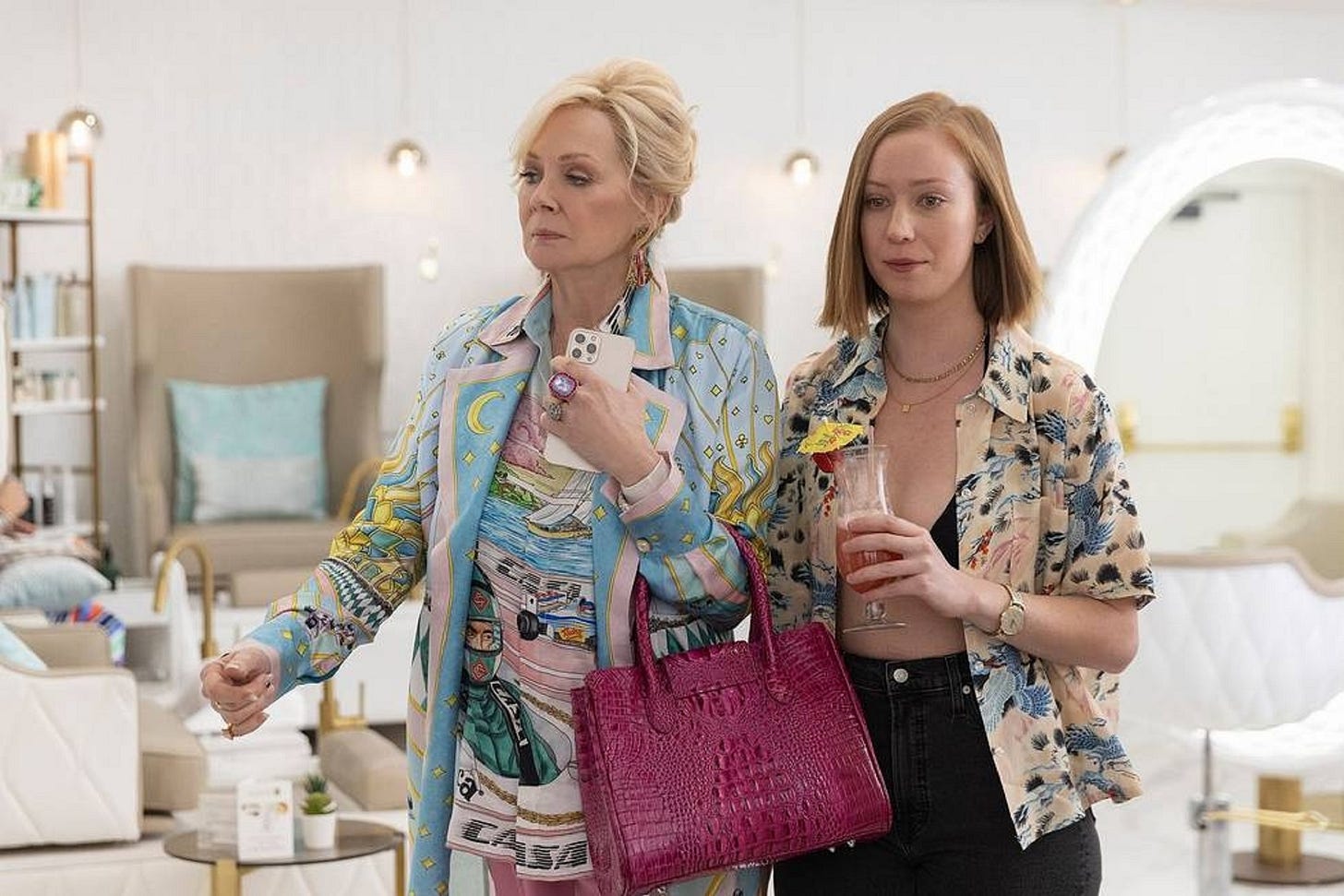
And then, in the season two ending, there is a twist in the costuming alone that almost makes you cry.
“We see a more stripped-down version of Deborah Vance because her show is all about her being more open and more vulnerable, and raw, and we very much wanted that reflected in the costumes,” Felix-Hager explains of Deborah’s triumphant performance in the finale that finds Smart wearing a stark black tuxedo on a darkened stage. “I knew that we really were just going to get a silhouette of her and just mostly focus on her face.”
And then, in counterpoint, Ava dons an uncharacteristic faux Chanel tweed frock trimmed in gold-chain that Deborah had insisted on buying for her on the road earlier in the season. I told Felix-Hager I thought it read as these two women having moved so much closer together that they’ve even adopted their version of the other’s style of dress — before their inevitable split.
“Basically, Ava is offering herself up to Deborah: ‘I'm yours. I'm here, I want you to love me. Please love me, I'm going to give you the version that you want of me,’” Felix-Hager confirms. “And then when Deborah fires her, it just made it all the more sad that she's in that little dress and she still thinks she was rejected.”
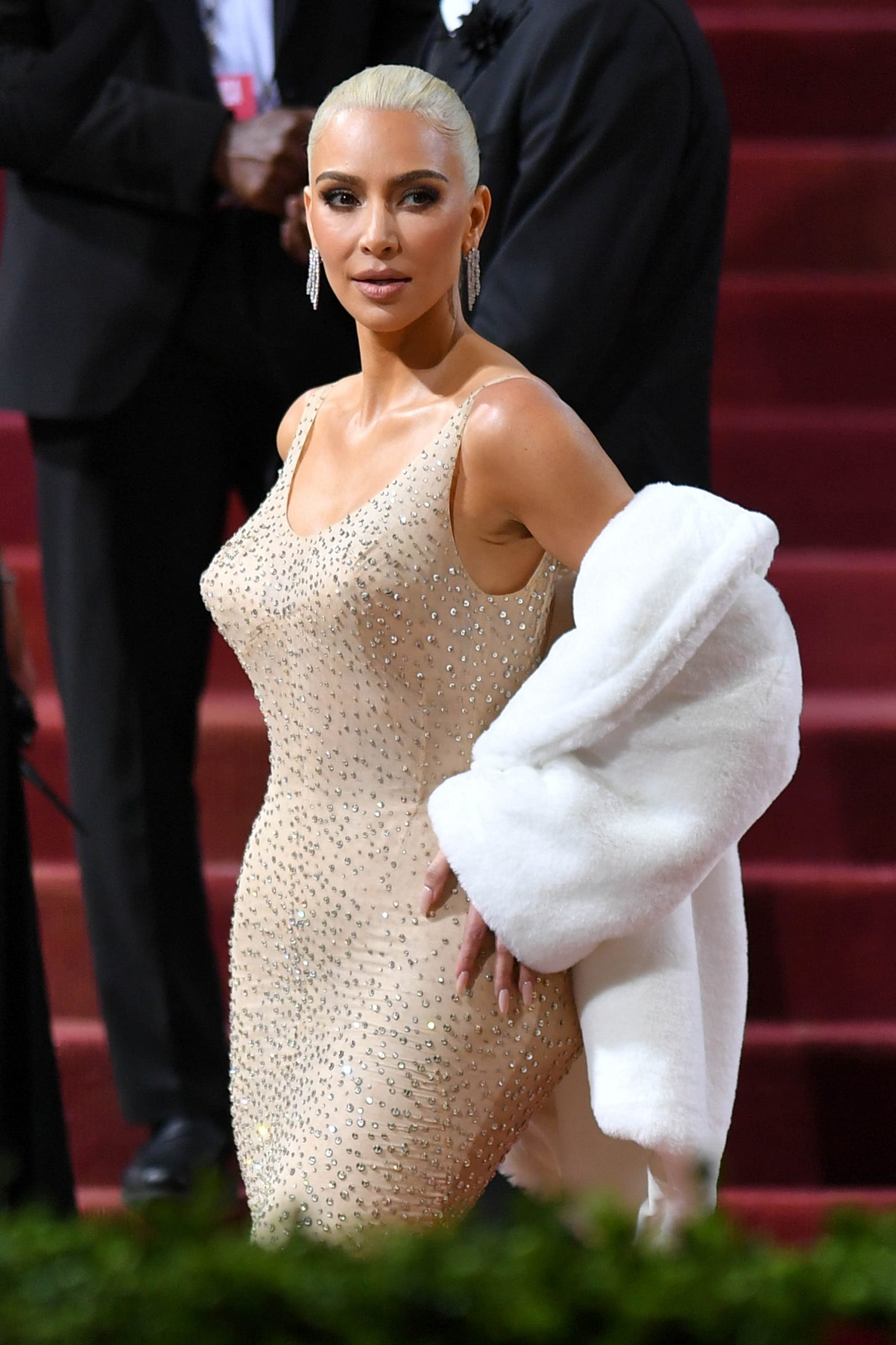
Believe Them Or Not: Ripley’s Denies Dress Damage
Unfortunately, it’s impossible to talk about the red carpet right now without wading into the controversy that bubbled up in social media last week over whether Kim Kardashian damaged Marilyn Monroe’s iconic “Happy Birthday, Mr. President” dress when she wore it to the Met Gala as I discussed in a recent column.
Images of the Jean Louis original that appeared to show damage to the iconic “nude dress” already had been decried by fashion conservators when a defensive Ripley’s Believe It Or Not — the current owners of the priceless bit of Hollywood history which they purchased in $2016 for $4.8 million — were forced to “say with confidence” that Kardashian’s outing in the famed gown “did not cause damage,” according to reporting in the Los Angeles Times.
Churlishly in my view, the commercial exhibitors continued, “Our mission is to both entertain and educate visitors and fans, and sparking conversations like the discourse around Marilyn Monroe’s dress does just that,” the company said Thursday, trying to have its cake and eat it too. “No matter which side of the debate you are on, the historical importance of the dress has not been negated, but rather highlighted. A entirely new group of young people have now been introduced to the legacy of Marilyn Monroe,” the company said, asserting, “the fact remains that she did not, in any way, damage the garment in the short amount of time it was worn at the Met Gala.”
Before-and-after photos posted online seemed to tell a different story though. New damage such as threadbare sequins, tears along the back closure, puckering and pulled seams were visible in the several posts shared on the Instagram.
We already know Kim struggled to get into the dress, first controversially dieting down and then reportedly calling for more shapewear to get the thing on.
I also take issue with Ripley’s assertion that she only wore the delicate gown for a short time.
“From the bottom of the Met steps, where Kim got into the dress, to the top where it was returned, the dress was in the same condition it started in,” Ripley’s Amanda Joiner, vice president of publishing and licensing, said in the statement.
Anyone who has even been on the red carpet can tell you that even a “short” distance can take a long time to navigate moving from photographer to TV coverage to assembled press. Not to mention the stress on the garment from climbing the Met’s grand staircase.
Whatever the truth is, I still think the real outrage is the symbol of Kim wearing an archival treasure at an event at a museum committed to preserving the past and specifically benefitting the Metropolitan Museum’s Costume Institute.
There’s a bit of a “who knew what and when” aspect to unpacking the event but I can’t help feeling the Vogue crew and the Met were somewhat complicit as they made special arrangements for Kim to have changing areas to don the gown at the entrance to the red carpet and also later when she switched to a replica gown after her red-carpet strut.
The museum told me they had “no comment” when I inquired though I understand their position is that they had no prior knowledge and have no say over what the guests wear. Condé Nast did not respond to a request for comment.
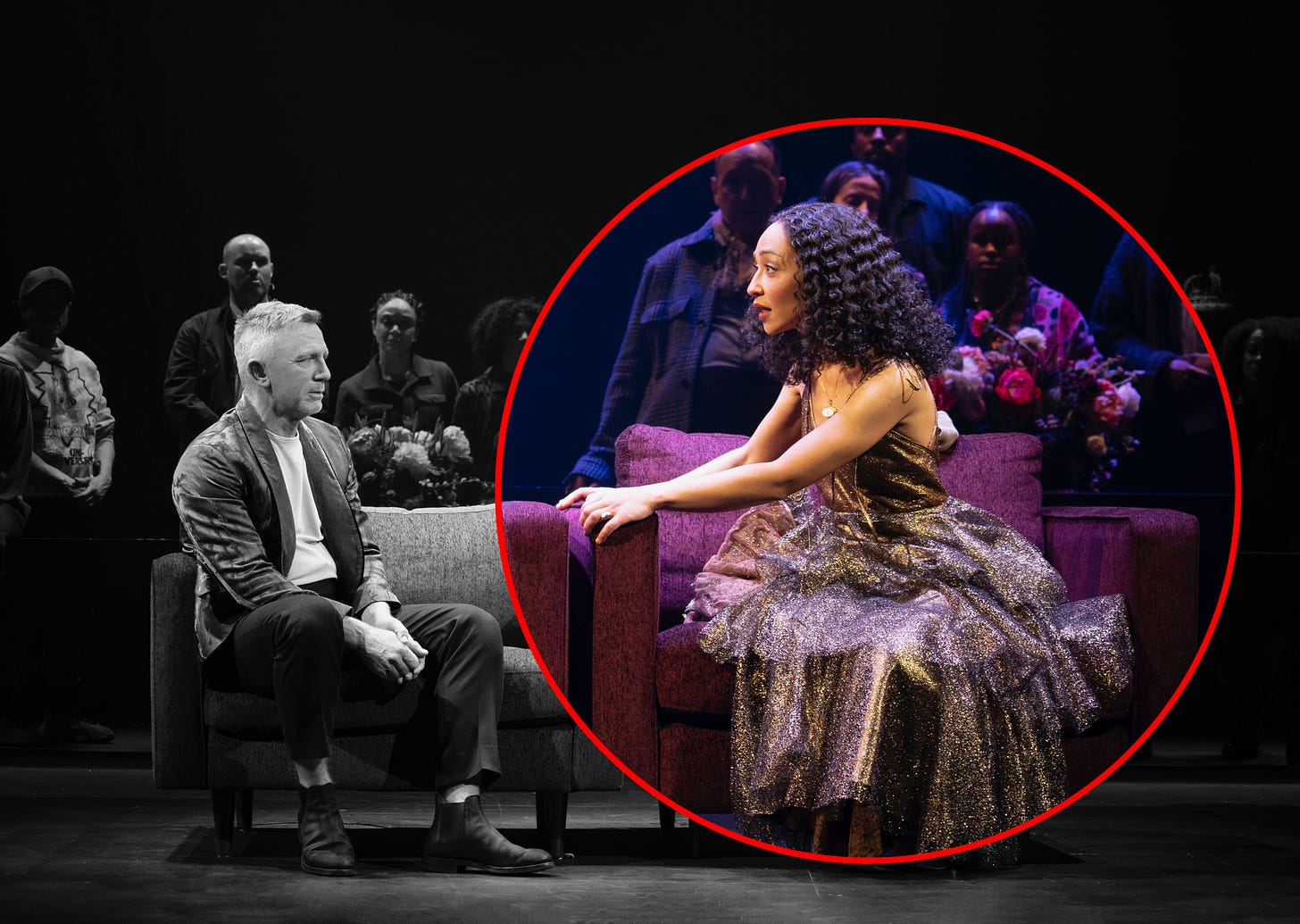
The Shifting Fashion Dynamics of Macbeth
With the Tony Awards just passed, I wanted to circle back to another standout performance fueled by a woman character’s exuberance for fashion, this time on stage — and far, far from the world of Hacks.
My birthday was a couple of weeks ago and plans fell apart at the last minute so I snagged a ticket for Macbeth, the stripped-down, limited-run revival now on Broadway (until July 10) starring Daniel Craig and Ruth Negga (who was nominated for a Tony for her performance.)
It was a kick to see the blockbuster Bond star on stage but Negga was the real knockout to me (and, of course, their chemistry together was off the charts).
The production was a rather dour affair from director Sam Gold that befitted The Scottish Play, with the company clad in versions of current-day street clothes.
Except for Craig and Negga.
They were both dressed in a brilliantly modern take on the raiment of royalty, with the would-be king attired variously in a hulking greatcoat, a floor-length tapestry robe de chambre, and a satin shirt that showed off some of the post-Bond muscle.
But I was absolutely transfixed by Negga, especially when she appeared as Lady Macbeth to host her party at the castle to welcome the doomed Duncan, wearing a froth of tiered gold lace. That looked like a gown that could go down the red carpet, I thought to myself, and so I subsequently reached out to the play’s costume designer, Suttirat Larlab, whose expansive resume includes Craig’s Bond finale No Time to Die and Disney+’s current Obi-Wan Kanobi, as well as her stage work.
In the meantime, The New York Times did a Q&A with Negga and they, too, noticed the gold dress. The actress explained that she wanted to counter the often sexless and austere image of the character:
“I wanted her to have no shame, be lusty and alive, and really enjoy her sexuality and her femininity, and not be frightened to stand out from the crowd,” she told the paper.
Larlab informed me that the production is meant to be set on the day the audience is watching it — “hyper-contemporary” she says — which was one deciding factor. The other factor was looking at the Lady and Macbeth as characters that are conjured up each night to put on the performance in a ritual of sorts by the rest of the company, the witches.
“So that allowed us to separate Ruth and Daniel, fully costuming them and keeping everybody else almost feeling like they are (still) in the rehearsal room,” she explains.
That jibed perfectly with what had occurred to me watching the scene. There was something regal about Negga in the gold gown, and it reminded me how similar it was to the red carpet, where celebrities who are grandly attired separate themselves from us poor slobs watching from the sidelines. And today in our culture, what are celebrities if not our “royalty”?
Larlab told me that was exactly right and added her own spin on American perceptions of royalty.
“Everybody says the closest thing we’ve ever had was the Kennedys and maybe the Obamas, in terms of like the level of celebrity, in terms of aesthetics and ‘swishness’”, she says. “I feel like the crown (in the play) is really the only symbol that might tell you that they’re lifted into this next level of hierarchy that we don't really have here in the States. It just reeks of what it is. It's power, it's unchanging history. It's lineage or the overpowering of one line by whoever usurps it. It's all those things rolled up into the symbol.”
Lady Macbeth’s transformation continues as the power balance between the couple changes as telegraphed by the famous sleepwalking scene where she dons a version of his masculine greatcoat. For anyone interested in clothing’s hidden symbolism and the vagaries of power, I say get thee to the theatre yourself to see this standout production.




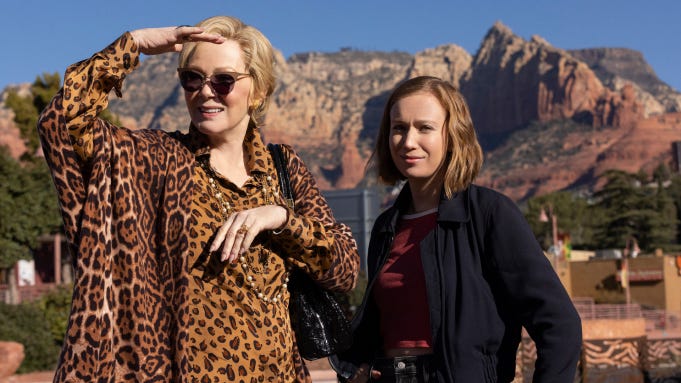
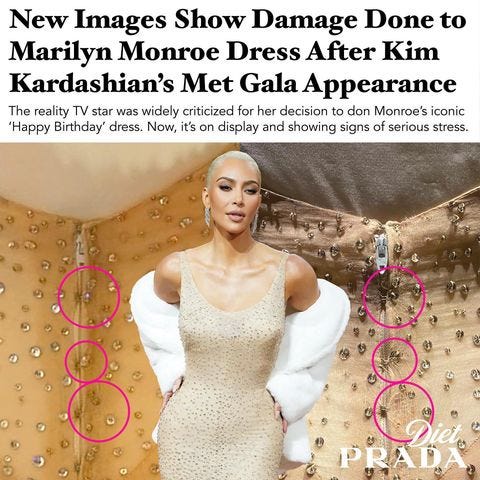
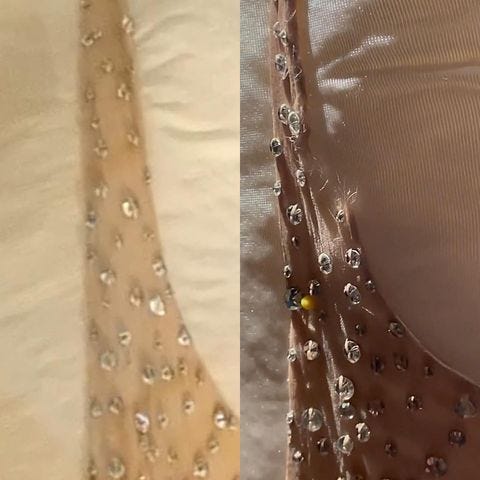
If Hollywood had cared about that dress, someone would have bought it and donated it to the Academy. Same with Debbie Reynold’s collection which was scattered to the winds.